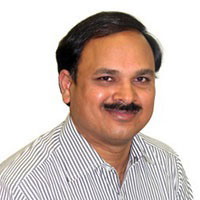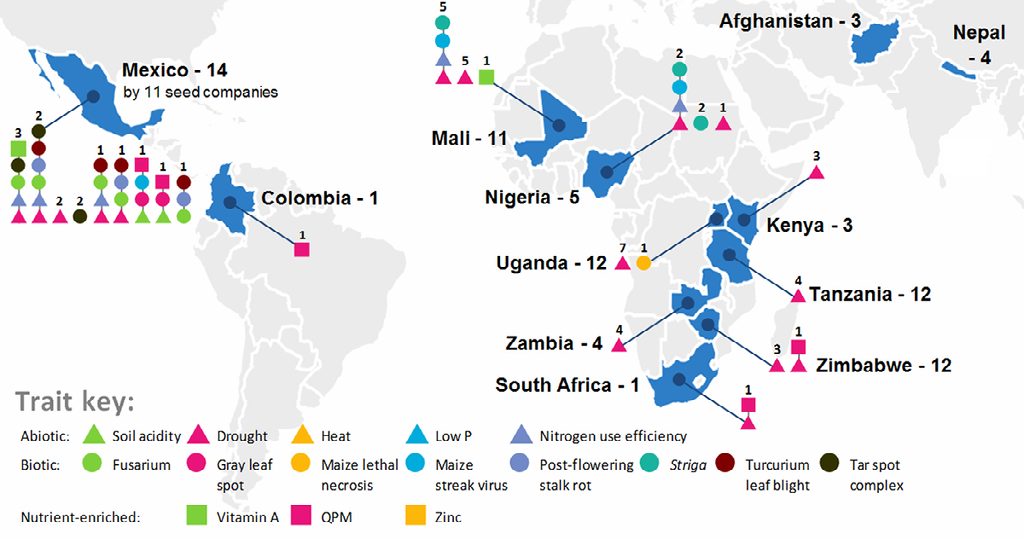MAIZE Annual report 2014
"Through cutting-edge scientific innovation and a strong network of partnerships, MAIZE works to improve the lives and livelihoods of smallholder farmers across the world" - Dave Watson, MAIZE Program Manager
Message from the new CRP Director

The year 2014 was full of exciting research, projects and accomplishments for the CGIAR Research Program on Maize (CRP MAIZE). We initiated a new cross-CRP gender study that will be used to integrate gender-sensitive approaches across our work, and helped organize the 12th Asian Maize Conference to build coalitions for greater food security in Asia.
Our research is estimated to have benefited 4 million farmers in 2014, and directly resulted in improved technologies being adopted and used on at least 2.3 million hectares of land.

Maize is a staple food for 900 million people living on less than US $2 a day, and the sole livelihood of many smallholder farmers in developing countries vulnerable to climate change. These farmers and consumers are at the heart of our work at MAIZE, and working to prevent their food insecurity and loss of livelihood through new varieties, improved technologies, information services and market opportunities is our main objective. Consistent and secure funding for maize research and development will be crucial as we work not only to confront the challenges of today, but to prepare for the demands of the future.
B.M. Prasanna
Director, CRP MAIZE
Combating maize diseases
MAIZE and its partners continued to spearhead efforts to combat the emergence of Maize Lethal Necrosis (MLN) as a major challenge to the maize sector in Eastern Africa since 2011. MAIZE works closely with both public and private sector partners to identify/develop and deliver new sources of resistance to MLN.
Three tar spot disease-resistant hybrids were released through partners in Mexico, while efforts continued to combat the weed Striga in sub-Saharan Africa through bioherbicides and integrated management options for smallholder farmers.
Ramping up investments in gender
Women play a key role in maize farming systems, we know, for example, that about 43 percent of the agricultural labor force in the developing world is female. What we don’t always understand however, is how agricultural interventions affect men and women differently, and how gender relations affect how innovations are adopted and the benefits shared.
This is why MAIZE has continued to increase investing in gender. Over 20 of our large projects now have some form of gender integration, five times more than when we began in 2011. We have also contributed over US $500,000 to the Cross-CRP Global Study on Gender Norms, Agency and Innovation in Agriculture and Natural Resource Management, or ‘Gennovate’. This will see case studies into the role played by gender carried out in over 125 agricultural communities in 26 countries.
Whereas some of our projects take care to include gender perspectives in planning and data collection, others actively target women and marginalized groups in order to have an empowering impact. The Hill Maize Research Project, which we reported on last year, has now been ended. We can now evaluate the successes and what can be learned for projects in the future.
A new generation of maize for Africa
In 2014, the Drought Tolerant Maize for Africa (DTMA) project continued to make great strides in what it does best: developing and delivering high-yielding drought-tolerant maize varieties for Africa’s most drought-vulnerable farmers. Maize is one of the most important staple crops in sub-Saharan Africa, where a farmer may expect to face drought several times a decade. Each time, they risk losing much of their harvest, an ever-present threat to the food security and livelihoods of smallholder farmers and consumers in the region.
Transforming food systems in the Eastern Gangetic Plains
The Sustainable and Resilient Food Systems Initiative (SRFSI) is exploring the potential for such innovations to transform agriculture in the Eastern Gangetic Plains, directly assisting 40,000 farmers, 30 percent women, to adopt more productive and sustainable farming practices. More than that, it seeks to use the confluence of three borders and a deep understanding of farmers to understand how different circumstances affect the uptake and success of different innovations.
Financial highlights
